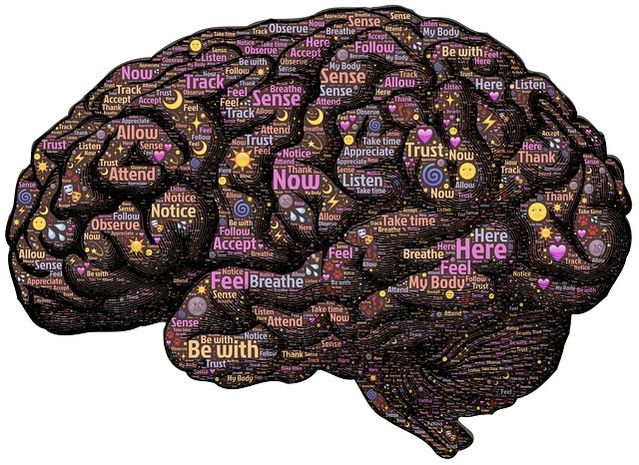Meditation
How Meditation Improves Emotional and Physical Health
Common mechanisms explain the benefits of many meditation practices.
Posted August 4, 2019 Reviewed by Devon Frye
Meditation is enjoying a period of unprecedented popularity in the U.S. Although there is written evidence of meditation practices dating back to at least 1500 B.C., with a multiplicity of distinct meditation techniques emerging in the early cultures of India, China, and Egypt, meditation remained no more than a niche hobby in the U.S. until very recently. Statistics from the Centers for Disease Control and Prevention indicate that the number of Americans using some form of meditation increased from 4.1 percent in 2012 to 14.2 percent in 2017.
Parallel to the rapid rise in meditation practice in the U.S. is the growing evidence that meditation is good for our health. As documented in a 2018 article in the journal PLoS One [1], the volume of research on meditation increased by over 1,000 percent in recent decades, as measured by the number of annual peer-reviewed publications.
According to this large body of research, meditation is associated with improvements in many important health conditions—including depression, post-traumatic stress, and hypertension and other cardiovascular diseases. It even appears to trigger favorable changes in biological processes such as inflammation, immune system functioning, and cellular aging. To put this in perspective, consider that if a pharmaceutical company developed a medicine akin to meditation—providing such broad health benefits with so few side effects–it would probably be treated like fluoride and placed in the nation’s water supply to maximize distribution.
Although there is increasing debate among proponents about the “best” form of meditation, current research does not support large differences in the health benefits of different meditation modalities. Instead, it appears that the regularity of meditation practice is more important than the type of meditation practiced and that meditation preferences are mostly subjective rather than reflecting substantive differences in quality.
The reason that different forms of meditation produce similar health benefits is that they produce parallel physical and emotional changes whose shared impact on health exceeds any effects of their outward differences in technique. Although these changes are interconnected rather than independent, it is practically useful to discuss each in isolation.

1. Meditation improves breathing quality.
Breathing as a centerpiece of meditation was taught by authorities as revered as the Buddha; today, it remains a critical component of all major meditation practices. Most people take their breathing for granted, yet it plays a greatly underappreciated role in cognitive function, emotional regulation, and many health processes.
The type of controlled, relaxed breathing skills developed with regular meditation practice produces both immediate and long-term benefits. For example, studies show that even a few minutes of meditative breathing can reduce inflammatory cytokines levels measurable in saliva samples. Blood pressure and muscle tension also rapidly decline; thinking processes slow, enabling increased focus and concentration.
Longer-term, these breath-induced benefits help explain research showing that regular meditation practice improves medical conditions such as chronic pain and hypertension, as well as mental health conditions such as depression and post-traumatic stress disorder.
2. Meditation improves nervous system function.
The sympathetic nervous system and the parasympathetic nervous system make up two important branches of our autonomic nervous system. In practice, the sympathetic and parasympathetic branches work, respectively, like a gas pedal and a brake to help us respond to the demands of our internal and external environments. The sympathetic system regulates responses such as inflammation and arousal, whereas the parasympathetic system regulates the anti-inflammation process and promotes relaxation.
Although the sympathetic system—playing a more visible role in stress and illness—receives considerable bad press, it is more accurate to consider the sympathetic and parasympathetic systems as the yin and yang of your autonomic nervous system, providing complementary functions that are all essential for life. In modern times, however, the yin-yang balance necessary for optimal health is too often replaced by a state of “sympathetic dominance,” in which a person may become chronically stressed, poorly nourished or rested, and more vulnerable to illness.
Recent neuroscience research assessing the effects of meditation on the nervous system suggest that regular meditation practice can—at least partially—reverse this harmful imbalance of the sympathetic and parasympathetic systems [2]. This research shows, for instance, that meditation favorably alters heart rate variability (HRV). HRV is a measure of sympathetic and parasympathetic function assessed by carefully measuring beat-to-beat variations in the heart, with meditators showing that HRV changes over time are indicative of greater parasympathetic system activity and lower sympathetic system activity.
Interestingly, at least some research indicates that these nervous system benefits from meditation are superior to standard relaxation and that they strengthen with practice [3].
3. Meditation improves emotional regulation.
Whereas the autonomic nervous system coordinates activities between the brain and lower body, the central nervous system functions as the overall command center in the brain and spinal cord. Until recent decades, it was difficult to measure the impact of behavioral practices such as meditation on the function and structure of the brain. The increasing availability of tools such as functional MRI in research, however, now make it possible to detect both short-term and long-term changes that occur in the brain in response to meditation.
Areas of the brain critical to the fight-or-flight response—such as the amygdala, for example—appear to decrease in size with regular meditation practice [4]. These amygdala region reductions may explain why meditators show reduced reactivity to emotional stimuli and reductions in anxiety and depressive symptoms.
These same central nervous system changes improved by meditation are also important to physical health through their influence on blood pressure, inflammatory processes, stress hormones, and other biological processes linked to cardiovascular disease, as supported by a 2017 statement from the American Medical Association [5].
References
1. Vieten C, et al. Future directions in meditation research: Recommendations for expanding the field of contemplative science. PLoS One. 2018; 13(11): e0205740.
2. Ido Amihai and Maria Kozhevnikov, “The Influence of Buddhist Meditation Traditions on the Autonomic System and Attention,” BioMed Research International, vol. 2015, Article ID 731579, 13 pages, 2015. https://doi.org/10.1155/2015/731579.
3. Tang Y, et al. Central and autonomic nervous system interaction is altered by short-term meditation. PNAS June 2, 2009 106 (22) 8865-8870; https://doi.org/10.1073/pnas.0904031106.
4. Leung MK, et al. Meditation-induced neuroplastic changes in amygdala activity during negative affective processing. Soc Neurosci. 2018 Jun;13(3):277-288. doi: 10.1080/17470919.2017.1311939.
5. Levine GN, et al. Meditation and Cardiovascular Risk Reduction. A Scientific Statement From the American Heart Association. https://doi.org/10.1161/JAHA.117.002218.




